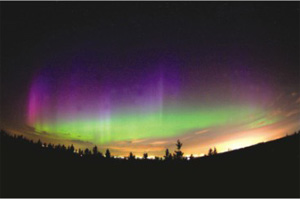The strange, beautiful coloured lights that circle the Earth’s polar regions are a source of fascination for many. But as the Aurora Borealis, or Northern Lights, dance in the frozen skies over Alaska, scientists’ trigger fingers are poised to launch rockets.
Could our planet be under attack from the unearthly forces that cast a mysterious glow across the poles, disrupting life as we know it? The researchers at the world’s largest land-based rocket range hope to learn more about these storms and their impact on lives in the northern hemisphere.
The luminous sheets of light might look spectacular, but they are also visual indicators of geomagnetic storms in space that can interfere with satellites, power grids, navigation and communication systems. They can even corrode oil pipelines.
 It is this disruption that the researchers are trying to help mitigate.
It is this disruption that the researchers are trying to help mitigate.
The Poker Flat Research Range’s location in central Alaska makes it the perfect place to study, and film, the Aurora Borealis.
They worked with a team from the University of Alaska Fairbanks (UAF) Geophysical Institute — the only academic institution in the world with its own scientific rocket-launching facility.
Since 1969, hundreds of rockets have been launched from the base in an attempt to gain new perspectives on the interaction between the Earth’s atmosphere and the space environment.
For almost 10 years, aurora expert Prof Dirk Lummerzheim’s project has studied the Northern Lights.
“We wanted to study how the upper atmosphere gets set in motion by the aurora,” he explains. “This is important because the wind at auroral altitude might affect satellite velocity.
“Moving the atmosphere around also changes its electrical properties, which would affect GPS and satellite communication, as well as short-wave long-distance radio communication.”
On winter nights illuminated by green waves, the team fire “sounding rockets” 60 miles straight up into the light displays.
Taking their name from the nautical term “to sound”, meaning to take measurements, these rockets do not blast into orbit but simply roar upwards before falling back down to Earth.
As the rockets arc through the atmosphere, they release a plume of smoke which scientists on the ground can track using sophisticated filming equipment.
Studying the footage and using the stars as known points of reference, researchers can track how the smoke plumes descend, and use these patterns to calculate wind speeds in the upper atmosphere.
“By understanding how these geomagnetic storms are caused, we may eventually be able to predict them more reliably,” Prof Lummerzheim said, adding, “If we can predict space weather, we can prepare for it and mitigate the dangers.”
-With bbc.co.uk input




















